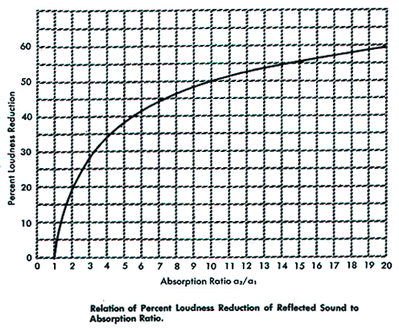Noise Reduction |
|||
Reflected
sounds that are not absorbed will cause as increase in overall sound levels
in a space. When the space is acoustically treated the sound build up
is eliminated or reduced. The sound level differences between the untreated
space and the acoustically treated space is described as the Noise Reduction
(NR). Sound measured on one side of a wall and then on the opposite side will reflect the sound transmission blocking characteristics of the wall. The difference between the two measurements is described as the Noise Reduction characteristics of the wall. Treating a noisy reverberant space with acoustical materials can reduce the reflected sound build up that occurs due to the reflective hard surfaces. In a"before treatment" and "after treatment" comparison the decibel level can be calculated. This diagram can be used to compare how the sound reduction will be perceived. Example: An existing room with 500 sabines of absorption prior to acoustical treatment that adds an additional 1500 sabins will have a absorption ratio of
The treated room will be perceived to be about 37% quieter than the untreated room. |